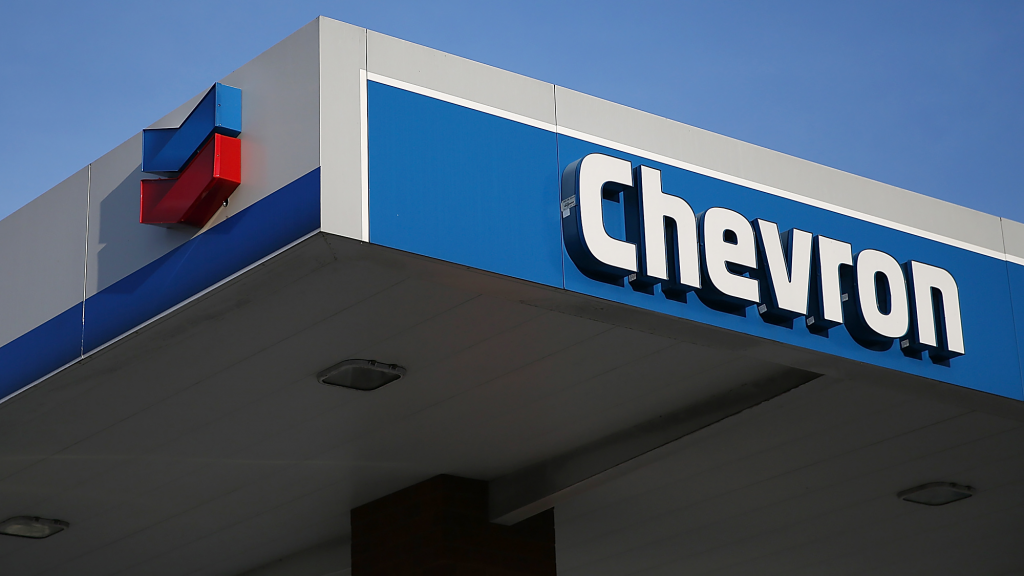Chevron issued a cautionary note to investors on Monday, revealing that Exxon Mobil and China’s Cnooc have asserted their potential right to preempt the company’s bid for a stake in a lucrative oil project off the coast of Guyana. This emerging dispute threatens to disrupt Chevron’s significant deal for Hess.
According to a regulatory filing, Chevron disclosed that Exxon and Cnooc claim they hold the right to counter Chevron’s offer for Hess’s stake in the Guyana project, operated by Exxon and representing one of the largest oil discoveries in recent years. The filing also warned investors that Chevron might not be able to finalize its purchase of Hess “within the time frame the company anticipates or at all.”
A substantial portion of the value in Chevron’s proposed $53 billion all-stock acquisition of Hess last year was linked to Hess’s 30% stake in an Exxon-led drilling consortium in Guyanese waters. This partnership has rapidly expanded oil production, expecting to exceed 1 million barrels per day in the near future.
The revelation poses a potential setback to Chevron’s largest acquisition in years, although it remains uncertain whether Exxon and Cnooc will indeed submit a counteroffer. Currently, their assertions only hint at the possibility.
Chevron’s spokesman, Braden Reddall, clarified that Chevron and Hess dispute the application of a right-of-first refusal to the Hess deal. Chevron indicated that productive discussions have been ongoing with the involved parties, expressing optimism that the negotiations will yield an outcome that doesn’t impede the deal’s progress.
“We are fully committed to the transaction,” stated Reddall. “There is no possible scenario in which Exxon or CNOOC could acquire Hess’ interest in Guyana as a result of the Chevron-Hess transaction.”
In the event that the ongoing discussions fail to reach a resolution, Chevron disclosed in a regulatory filing that either itself or Hess could opt to have Hess’s Guyana subsidiary pursue arbitration. A spokeswoman for Hess declined to comment further, deferring inquiries to Chevron. Cnooc did not immediately respond to a request for comment.
The root of the dispute lies in the terms outlined in a joint operating agreement (JOA) signed over a decade ago, which governs the consortium operating in Guyana. Hess became part of the JOA in 2014 when it acquired its stake from Shell. Certain JOAs allow existing partners, such as Exxon, to exercise pre-emption rights and participate in ownership changes, enabling them to counter an offer for an ownership stake with an offer of their own.
Exxon spokeswoman Emily Mir indicated that discussions with both Hess and Chevron are ongoing, highlighting the company’s collaboration with the Guyanese government on the matter.
“We owe it to our investors and partners to consider our pre-emption rights,” Mir remarked. Exxon aims “to ensure we preserve our right to realize the significant value we’ve created” in Guyana. However, Exxon did not confirm whether it intends to submit its own offer for Hess’s stake.
The specifics of the joint operating agreement (JOA) were not immediately evident, leaving questions about the existence of pre-emption rights or whether Chevron or other parties would have the opportunity to submit another offer.
Exxon holds a 45% stake in the Guyana oil project, with Cnooc owning the remaining 25%.
The clash with Exxon presents a setback for Chevron Chief Executive Mike Wirth, who recently disclosed setbacks and cost overruns for a significant oil project in Kazakhstan, along with shareholder returns that have lagged behind those of rival Exxon.
Chevron’s endeavor to participate in the burgeoning oil industry in the jungle-covered South American nation coincides with a strategic shift by American oil majors toward the Western Hemisphere amid global conflicts. Exxon relinquished its stake in a major Russian project following the conflict in Ukraine.
In recent years, both Exxon and Chevron have divested billions of dollars’ worth of assets in Asia and Africa, underscoring the increasing significance of U.S. shale plays and South America. Chevron resumed oil production in Venezuela last year following a relaxation of sanctions by the Biden administration, contributing to production growth exceeding market expectations. Additionally, the company is investing in Argentina’s shale reserves and exploring for oil and gas off the coast of Suriname, near Guyana.
Venezuelan President Nicolas Maduro has recently escalated military activities near the country’s border with Guyana, a nation of 800,000 people with limited defense capabilities. Satellite imagery released this month revealed the presence of light tanks, missile-equipped patrol boats, and armored carriers near Venezuela’s border, although analysts believe an invasion is improbable.
Exxon has shouldered the majority of the risk in the Guyana project, conducting drilling operations for years before substantial oil reserves were discovered. The company and its partners continue to explore for additional oil deposits, and the project’s value could see significant growth. Exxon presently estimates that the Guyana project contains nearly 11 billion barrels of oil and gas.
In November, Exxon commenced operations at a new offshore development in Guyana, boosting output by 220,000 barrels per day to a record level in the fourth quarter. The company plans to have six oil projects operational off the coast of Guyana by the end of 2027, with production anticipated to reach around 1.2 million barrels per day.
